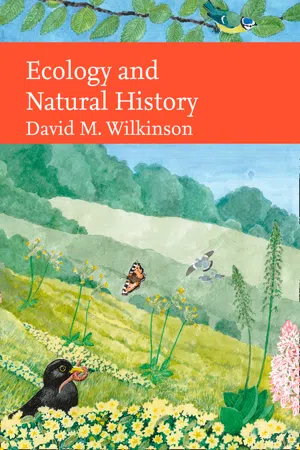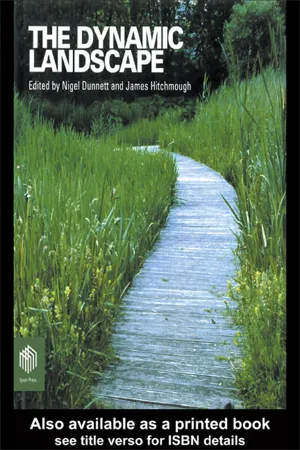Deciduous Woodlands
Deciduous woodlands are ecosystems dominated by trees that shed their leaves annually. These woodlands are characterized by a diverse range of plant and animal species, and are found in temperate regions with distinct seasons. They play a crucial role in maintaining biodiversity and providing habitats for various wildlife. Additionally, deciduous woodlands are important for carbon sequestration and soil conservation.
4 Key excerpts on "Deciduous Woodlands"
- eBook - ePub
Forest Entomology
A Global Perspective
- William Ciesla(Author)
- 2011(Publication Date)
- Wiley-Blackwell(Publisher)
...1.6) and oaks, Quercus spp., linden, Tilia spp., and ash, Fraxinus spp., are dominant components of low-elevation forests. In Asia, North America and the Near East, there are many more species of trees including representatives of the genera Acer, Aesculus, Carya, Juglans, Liquidambar, Liriodendron and Magnolia, as well as outliers of some tropical families (e.g. Diospyros) (Hora 1981). For example, the temperate deciduous forests of the southern Appalachian Mountains of southeastern USA have approximately 140 different species of trees (Westveld 1949). Figure 1.6 A temperate mixed deciduous broadleaf–conifer forest dominated by Fagus sylvatica and Picea abies (Alpensee near Füssen, Bavaria, Germany). Warm temperate forests may consist of both deciduous and evergreen broadleaf species and conifers and tend to occur along the eastern coastal regions of continents that are exposed to monsoons or trade winds. They often transition into subtropical forests. Rainfall is abundant and evenly distributed throughout the year. In southeastern Asia, eastern Australia and southern Brazil, there is a continuous gradation with increasing latitude from wet tropical to subtropical to warm temperate conditions. This makes it difficult to distinguish vegetation zones. These forests are typically dense and penetration is difficult due to abundance of vegetation. They tend to be rich in tree species, including some conifers, epiphytes and climbers, although less so than tropical forests. Some of the broadleaf trees found in these forests are deciduous. In Australia, warm temperate forests, dominated by Nothofagus, are found in Tasmania and Victoria. In Africa, only the Drakensburg Mountains of South Africa have suitably moist conditions to support warm temperate forests. The boundaries of the warm temperate forests of eastern North America are poorly defined because cold air masses move south as far as the Gulf of Mexico...
- eBook - ePub
- David Wilkinson(Author)
- 2021(Publication Date)
- William Collins(Publisher)
...Invertebrates also play a role in the breakdown of leaf litter, primarily by breaking the plant material up into smaller particles which are then more easily broken down by microorganisms. Woodlands can also form important stores of carbon, which is why deforestation is a concern in the context of climate change. However, somewhat counterintuitively, there is sometimes more carbon stored in the soils of Deciduous Woodlands than there is in the more visible trees and other vegetation. This carbon is the result of decomposition of previous plants and other organisms extending back hundreds if not thousands of years....
- eBook - ePub
A Christian's Guide to Planet Earth
Why It Matters and How to Care for It
- Betsy Painter, Muti(Authors)
- 2022(Publication Date)
- Zondervan(Publisher)
...The earth brought forth vegetation, plants yielding seed according to their own kinds, and trees bearing fruit in which is their seed, each according to its kind. And God saw that it was good. G ENESIS 1:12 T HE FORESTS OF THE EARTH SUPPORT AN AMAZING ASSORTMENT of trees, each suited to location and climate. The leaf shapes vary—oval, heart, lobed, spiked—and combine to form distinct canopies around the planet. Boreal forests are adapted to harsh, cold temperatures and snowfall. From an aerial view, their canopies are sparse, with pointed tops of conifer trees that triangulate down, the needle-covered branches lengthening toward the bottom of the trunk. The broadleaf forests have thick bundles of leaves from oaks, redwoods, and maples, with canopies that look undeniably like bunches of broccoli. Toward the equator, tropical climates create an oasis for rainforests whose dense canopies grow to soaring heights. It’s a playground for God’s most raucous and curious creatures on the planet. The humidity and moisture of the rainforest yield wild harvests of exotic plant life. Big, brazen, and beautiful flowers attract iridescent hummingbirds and resplendent butterflies. Venus fly traps snap their jaws on insect prey. Vegetation of all shades of green—lime, forest, sage, and olive—with some leaves as big as kites, tumbles and parades across the terrain. Jaguars climb trees to stalk their prey or rest on a bough. Monkeys scale the towering trunks and swing from branches and vines. The forest is overwhelmingly alive. It’s a playground for God’s most raucous and curious creatures on the planet. And it’s disappearing at an alarming rate. DEFORESTATION As the world’s population continues to grow, we use and destroy more and more forests to meet our needs for food, material goods, and space for homes and buildings. Known as deforestation, forests rapidly disappear when we fail to replant trees and restore the woodlands...
- eBook - ePub
The Dynamic Landscape
Design, Ecology and Management of Naturalistic Urban Planting
- Nigel Dunnett, James Hitchmough, Nigel Dunnett, James Hitchmough(Authors)
- 2004(Publication Date)
- Taylor & Francis(Publisher)
...Wetland forests are said to belong to the most species-rich habitats (Figure 7.13). As such, they can offer extremely rich experiences of landscape. Increasing interest in environmental solutions to urban drainage will give us more possibilities in the future to explore fields within designs that have so far been hardly touched. Figure 7.15 presents a diagram of a very old wetland forest of Salix, showing how the Salix pecies, through an ‘intelligent strategy’, are able to spread step by step, making it difficult for other species to evolve. When the outer branches get older they sink due to the weight, and some go under the water and come in contact with mud or other kinds of substrates, thereby giving a chance to new roots. A new individual is therefore formed and the old links become rotten within a few years. 7.13 An ancient wetland forest of alder 7.14 Designed wetland forest in the new housing area of Västra Hamnen in Malmö, Sweden—the national exhibition of experimental houses and green surroundings in 2001 7.15 Very old wetland forest of Salix (from the PhD thesis by Gustavsson (1986)) showing how the willow species form self-regenerating woodland Woodland aspects on an area level—overall design principles and approaches to a contextual design So far a lot of general principles for use in a woodland design have been presented, with the main goals being to reach beyond mainstream solutions and stressing more long-term dynamic thinking. Here, landscape character, basic landscape types to widen the understanding and the meaning of ‘urban woodland’, and reference landscapes have been the key words...



